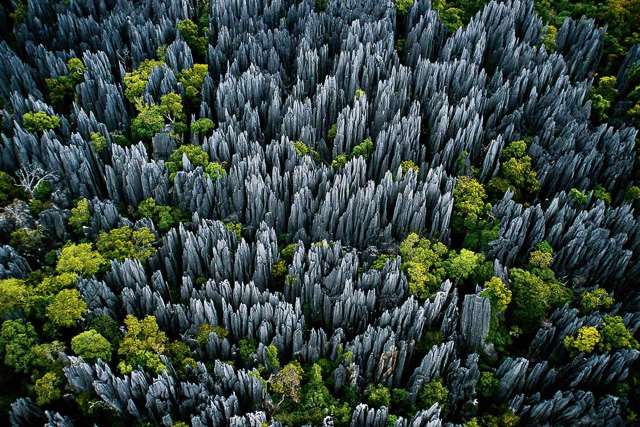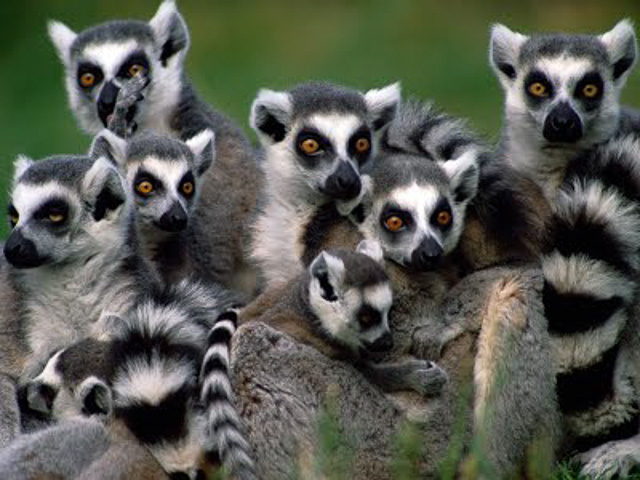About
Top Experiences
Type of Journey
Subscribe to newsletter and stay updated
Read about our travel expeditions, new destinations, new pictures, latest trip schedules
The Western Coast of Madagascar hosts the mineral forest of Tsingy de Bemaraha. Translated in Malagasy, “Tsingy” means “walking on tiptoes”. The impenetrable labyrinth of limestone structures properly justifies the term “Tsingy”. Officially designated as a World Heritage Site in 1990, the protected Park spreads for 660 square kilometers. It wasn’t even a tourist trek-spot until 1998, after which the Southern region was declared a National Park. Tourists are barred from entering the Northern section as it comprises an Integral Reserve. The reserve is home to abundant indigenous flora and fauna and comprises deep canyons, gorges, forests untouched by humans, beautiful lakes and mangrove swamps. The rate of the existence of indigenous species is around 85%, with 47% being locally indigenous.
OVERVIEW
Location: West Madagascar
Nearest Airport: Morondava airport
How to reach: 4 hours from Morondava airport
Famous for: Lemurs,
Reptiles,
Amphibians,
Birds
Best time to visit: April to December
WHAT TO SEE
Spot 11 lemur species, including for red-fronted brown lemur, decken’s sifaka, grey mouse lemur, fat-tailed dwarf lemur or the Cleese’s woolly lemur and the Sambirano lesser bamboo lemur are endemics. Other mammals are ring-tailed mongoose and small carnivorous falanouc, and several bats.
More than 100 bird species including the critically endangered crested ibis, Madagascar fish eagle and Giant coua, Madagascar wood-rail,
The 45 reptiles and amphibians which are found here are all endemic. Endemics are the Madagascar iguana, Antsingy leaf chameleon and local endemic long-tailed skink
A plateau was created around 200 million years ago, when a risen limestone seabed eroded little by little, due to heavy rainfall, till it acquired a particular shape. The massif that resulted from this process is limited in its boundaries, by the presence of the Bemaraha cliffs in the East. The Bemaraha Cliffs are elevated to a height of 300 to 400 meters, above the Manambolo River valley and extend for several tens of kilometers from North to South. Comparatively, the western slopes of the massif witness gentle slopes. The entire western region of the reserve is in the form of a plateau, consisting of rounded hillocks that slop to the west. The Northside of the region witnessed several hills alternating with limestone extrusions. Access in the South is restricted because of the extensive pinnacle formations. To the South of Petit Tsingy in theTsingy de Bemaraha National Park,is the magnificent Manambolo Gorge, rigged with lemurs, waterfalls and dense forests, untouched by human interference. Irrespective of how inaccessible this particular area ofTsingy de Bemarahais, it is often included in the tour operator programs.
The Western region of Tsingy de Bemaraha strict nature reserve is covered in deciduous forests because these forests can withstand the changing climates in the area. In contrast to the Western region, the Eastern region is filled with low bushes and grassy savannas. The flora of the park is endemic and therefore can’t be found anywhere else. Owing to the humidity, the canyons are filled with patches of dense tropical forests.
Tourists might spot several lemur species, including for Decken’s sifaka, red-fronted brown lemur, grey mouse lemur, fat-tailed dwarf lemur, or the Cleese’s woolly lemur and the Sambirano Lesser bamboo lemur, which are indigenous to the region. All in all, Tsingy de Bemaraha National Parkinhabits eleven lemur species. Apart from lemurs, resident mammals include carnivorous falanouc, several bats, and ring-tailed mongoose.
Tsingy de Bemarahais also home to more than a hundred bird species, including, but not limited to the endangered Madagascar fish eagle and crested ibis, Madagascar Wood-rail, giant coua or Coquerel’s Ìs coua.
All of the 45 amphibians and reptiles that inhabit the park are indigenous to the region, such as the Madagascar iguana, a local endemic long-tailed skink, and the Antsingyleaf chameleon.

Hiking in the Tsingy
The landscape at Tsingy de Bemarahagives ample opportunities for conducting hikes and treks. There exist two major hiking trails; the first group of trekkers set out early in the morning, and the second group sets out at midday. Only a limited number of tourists can go hiking each time, to avoid congestion on the trails. It is important to be extremely ready before you choose to indulge in any of the two hiking trails.
The Andamozavaky
The Andamozavaky is famous for the view of stony pinnacles. During the hike, you’ll have to navigate dense forests and you’ll emerge from the center of one of the pinnacles. Remember to carry ample water with you, before you go for the trek.

The Manambolo Gorge trail
The Ranostara is the second trek trail used by tourists. It takes you on quite a journey as you navigate to get out of the forests and are welcomed by a wonderful view of limestone rocks. However, you will have to ride a canoe to get past the Gorge.